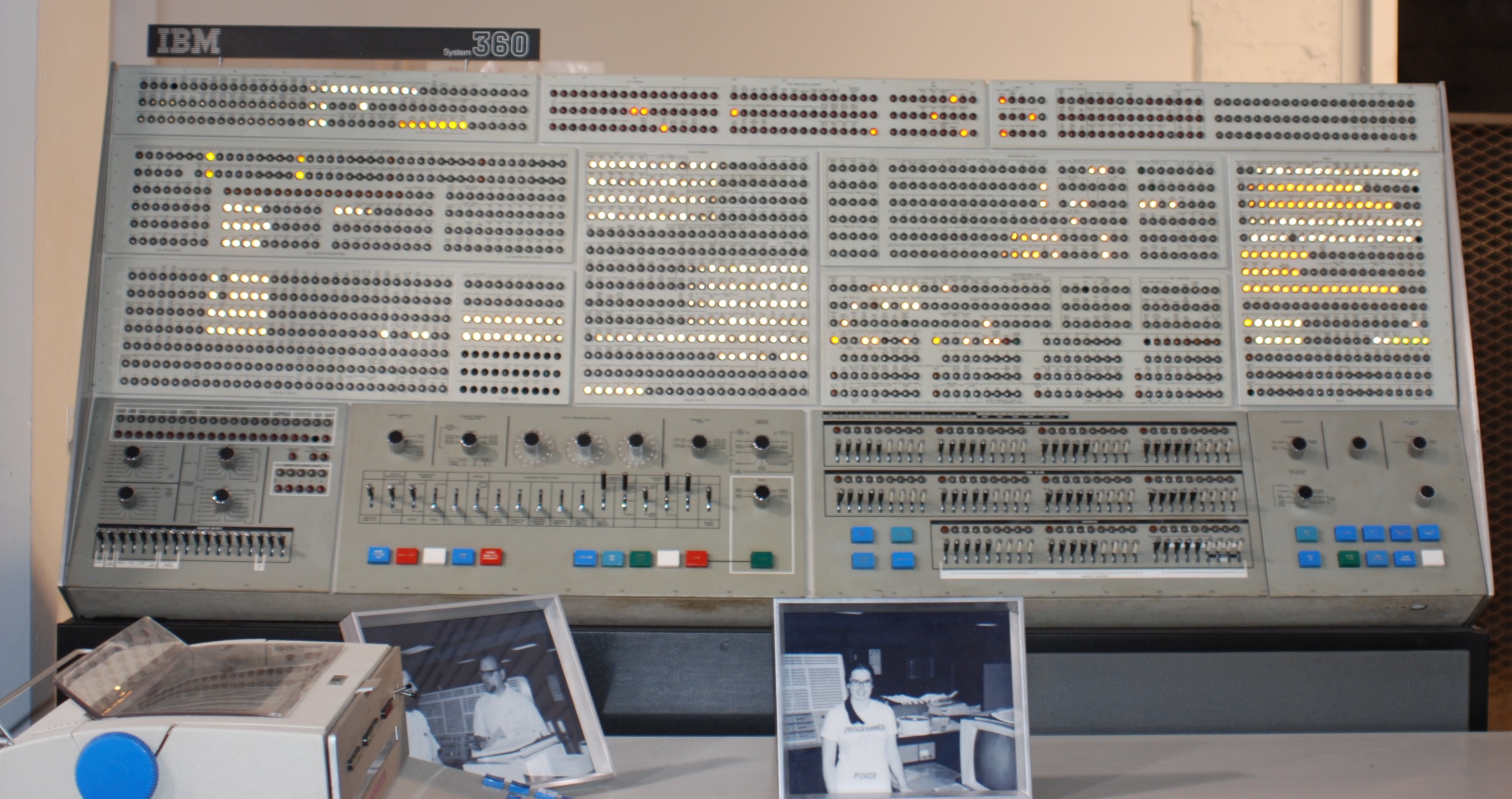|
IBM 2395 Processor Storage
The IBM 2395 Processor Storage is a memory storage unit that was a component of the IBM System/360 Model 91 and Model 95. Despite the name, IBM 2395 Processor Storage was used for more Model 91s than for Model 95s; the Model 95 used thin-film memory Thin-film memory is a high-speed alternative to core memory developed by Sperry Rand in a government-funded research project. Instead of threading individual ferrite cores on wires, thin-film memory consisted of 4-micrometre thick dots of per ... for the first 1MB of memory, and only two Model 95 machines were produced. Models There were 2 models of the 2395: the Model 1 supplied 2 megabytes of memory, and the Model 2 had 4 MB. Other use by IBM of 2395 * iSeries 9406-820 (processor 2395) * IBM 95Y2395 - FC5022 2-PORT 16GB FC ADPT References {{reflist Computer memory 2395 Processor Storage ... [...More Info...] [...Related Items...] OR: [Wikipedia] [Google] [Baidu] |
IBM System/360 Model 91
The IBM System/360 Model 91 was announced in 1964 as a competitor to the CDC 6600. Functionally, the Model 91 ran like any other large-scale System/360, but the internal organization was the most advanced of the System/360 line, and it was the first IBM computer to support out-of-order instruction execution. It ran OS/360 as its operating system. It was designed to handle high-speed data processing for scientific applications. This included space exploration, theoretical astronomy, sub-atomic physics and global weather forecasting. The first Model 91 was used at the NASA Goddard Space Flight Center in 1968 and at the time was the most powerful computer in user operation. It was capable of executing up to 16.6 million instructions per second, making it roughly equivalent to an intel 80486SX-20 MHz CPU or AMD 80386DX-40 MHz CPU in MIPS performance. The CPU consisted of five autonomous units: instruction, floating-point, fixed-point, and two storage controllers for the overlap ... [...More Info...] [...Related Items...] OR: [Wikipedia] [Google] [Baidu] |
Thin-film Memory
Thin-film memory is a high-speed alternative to core memory developed by Sperry Rand in a government-funded research project. Instead of threading individual ferrite cores on wires, thin-film memory consisted of 4-micrometre thick dots of permalloy, an iron–nickel alloy, deposited on small glass plates by vacuum evaporation techniques and a mask. The drive and sense lines were then added using printed circuit wiring over the alloy dots. This provided very fast access times in the range of 670 nanoseconds, but was very expensive to produce. In 1962, the UNIVAC 1107, intended for the civilian marketplace, used thin-film memory only for its 128-word general register stack. Military computers, where cost was less of a concern, used larger amounts of thin-film memory. Thin film was also used in a number of high-speed computer projects, including the high-end of the IBM System/360 The IBM System/360 (S/360) is a family of mainframe computer systems that was announced ... [...More Info...] [...Related Items...] OR: [Wikipedia] [Google] [Baidu] |
IBM AS/400
The IBM AS/400 (Application System/400) is a family of midrange computers from IBM announced in June 1988 and released in August 1988. It was the successor to the System/36 and System/38 platforms, and ran the OS/400 operating system. Lower-cost but more powerful than its predecessors, the AS/400 was extremely successful at launch, with an estimated 111,000 installed by the end of 1990 and annual revenue reaching $14 billion that year, increasing to 250,000 systems by 1994, and about 500,000 shipped by 1997. A key concept in the AS/400 platform is Technology Independent Machine Interface (TIMI), a platform-independent instruction set architecture (ISA) that is compiled along with the native machine language instructions. The platform has used this capability to change the underlying processor architecture without breaking application compatibility. Early systems were based on a 48-bit CISC instruction set architecture known as the ''Internal Microprogrammed Interface'' (IMPI ... [...More Info...] [...Related Items...] OR: [Wikipedia] [Google] [Baidu] |
Computer Memory
In computing, memory is a device or system that is used to store information for immediate use in a computer or related computer hardware and digital electronic devices. The term ''memory'' is often synonymous with the term '' primary storage'' or ''main memory''. An archaic synonym for memory is store. Computer memory operates at a high speed compared to storage that is slower but less expensive and higher in capacity. Besides storing opened programs, computer memory serves as disk cache and write buffer to improve both reading and writing performance. Operating systems borrow RAM capacity for caching so long as not needed by running software. If needed, contents of the computer memory can be transferred to storage; a common way of doing this is through a memory management technique called '' virtual memory''. Modern memory is implemented as semiconductor memory, where data is stored within memory cells built from MOS transistors and other components on an integrated circ ... [...More Info...] [...Related Items...] OR: [Wikipedia] [Google] [Baidu] |


.jpg)